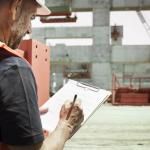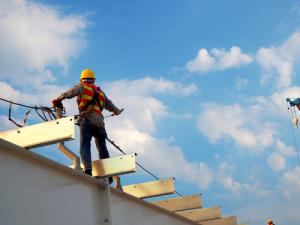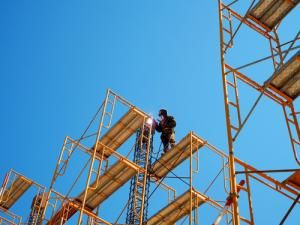
Working at Heights: Safety Awareness & Prevention

If you are an employer, construction supervisor, or worker required to perform a job task at an elevated height, you know that safety protection is an everyday practice. Protection and Prevention go hand in hand, all part of an effective safety awareness program that every organization should have. This need is particularly important when it comes to working at heights.
Safety Prevention begins with Safety Awareness
Safety prevention starts with awareness of the risks and the procedures that must be consistently applied. Safety awareness starts with communication from senior management, to set the tone for disciplined safety procedures each and every work day. A comprehensive plan to include specialized training is a requirement for any construction site where activity is conducted at levels 6 ft. and above. Leadership communication should go beyond meeting minimum safety requirements to inform all staff at the workplace that worker safety is a priority and an important enterprise goal.
Essential Safety Planning
 Safety awareness involves establishing and following a plan to communicate and train the workforce on the important aspects of working safely at heights. OSHA guidelines provide the general requirements, but it is always important to review the specific risks and go beyond the minimum, when necessary. The safety planning process starts by a full review of all the requirements of federal provincial and local governing bodies. Then apply the situational risks that are important to your job site. Awareness and an effective safety program begin with senior leadership’s commitment to safety.
Safety awareness involves establishing and following a plan to communicate and train the workforce on the important aspects of working safely at heights. OSHA guidelines provide the general requirements, but it is always important to review the specific risks and go beyond the minimum, when necessary. The safety planning process starts by a full review of all the requirements of federal provincial and local governing bodies. Then apply the situational risks that are important to your job site. Awareness and an effective safety program begin with senior leadership’s commitment to safety.
Safety Training Objectives
Safety awareness starts by communicating the responsibilities related to working at heights. This awareness message sets the baseline to ensure the right levels of basic and refresher safety training are conducted at regular intervals. Again, the law may require training programs, but it is leadership from the top and supervisors on-site the ensure the training is properly applied. The safety training for working at heights contains two specific areas: Fall Prevention and Fall Protection.
Fall Prevention Training
 Fall Prevention training covers the proper procedures when working on scaffolds, effective guardrail systems, and any other mechanisms to address fall restraints. Prevention training also covers safety procedures for any holes in elevated walkways or other openings in the roofing. Basic principles must be understood by every worker on the job site, and applied to the specific risk and environmental conditions. Specific application examples would include identifying the areas where guardrails must be placed and extra precautions in windy, and/or wet weather conditions.
Fall Prevention training covers the proper procedures when working on scaffolds, effective guardrail systems, and any other mechanisms to address fall restraints. Prevention training also covers safety procedures for any holes in elevated walkways or other openings in the roofing. Basic principles must be understood by every worker on the job site, and applied to the specific risk and environmental conditions. Specific application examples would include identifying the areas where guardrails must be placed and extra precautions in windy, and/or wet weather conditions.
Fall Protection Training
Fall Protection training covers the procedures used to assemble protection equipment, the proper use of personal protection equipment (PPE), and worker rescue procedures. Safety equipment can vary by job site and include: platforms, anchor points barriers and safety nets. The right protection system requires a solid understanding of the job site and related risks.
Site Safety is Everyone’s Responsibility
When working at heights, safety awareness means responsibility awareness and a well-defined training plan. Employers also have a general duty to provide information, instruction and supervision to the job-site workers. The safety mission includes adequate resources for training, site and equipment inspections. A comprehensive approach that protects the health and safety of the worker.
At Advanced Consulting & Training, we offer comprehensive Working At Heights training programs.
Contact us today to get started on yours, or to find out more about how to enhance the program you already have.


